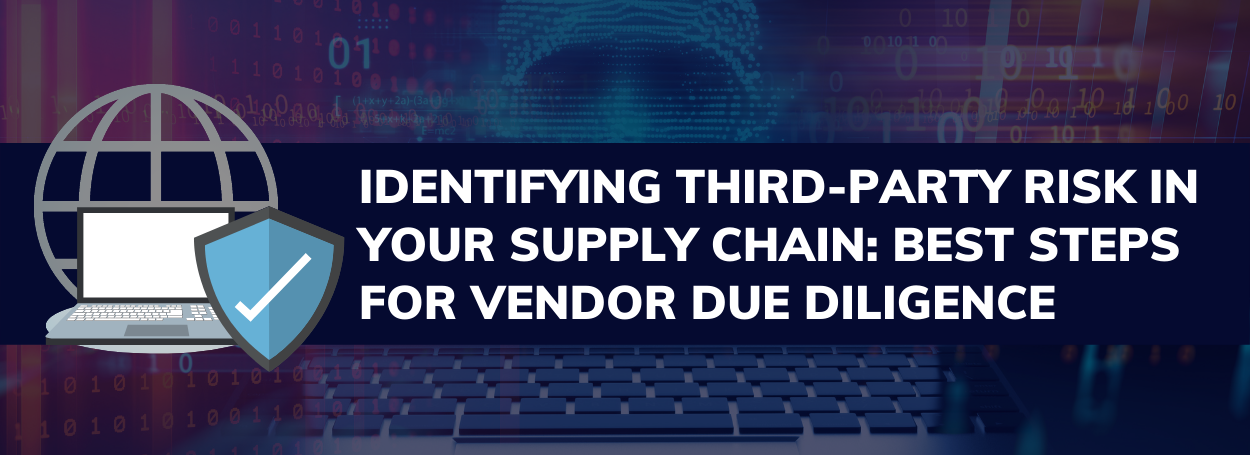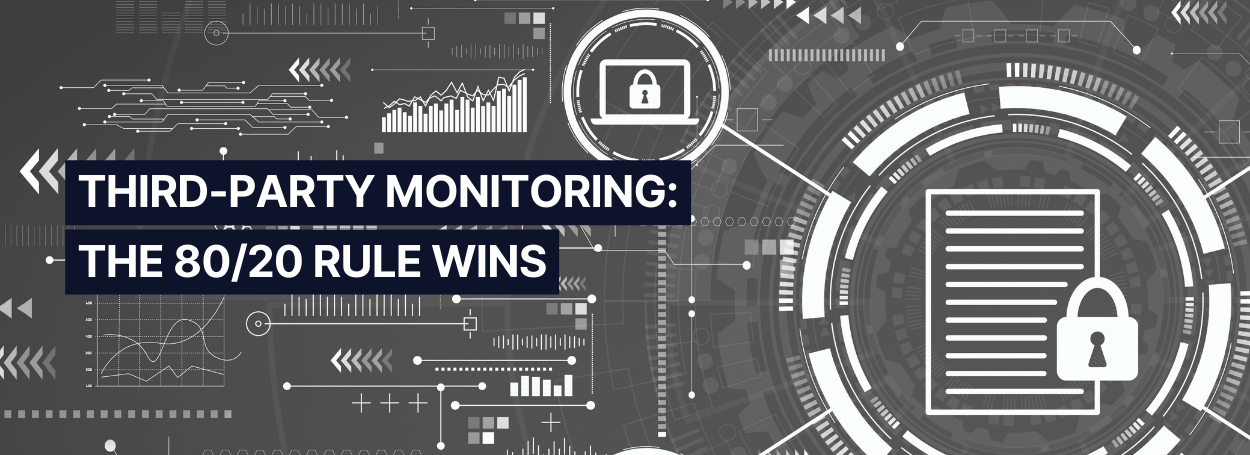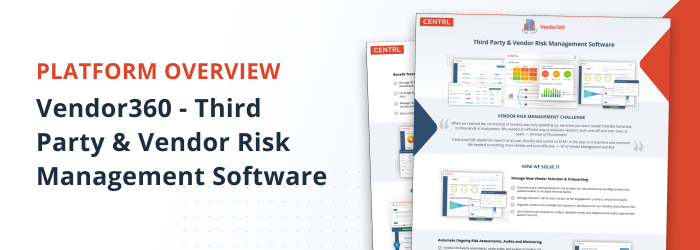Automating Vendor Lifecycle Risk Management: The Importance and Framework of a Comprehensive Continuous Monitoring Program

Your vendors provide your organization with a strategic edge and cut your costs, boosting your profitability and helping you to grow your business. The benefits of having vendor relationships are undoubtedly immense.
But your third-parties can expose your business to many different types of risks, such as data security, compliance, legal, business continuity, and reputational risks. It is important to understand that the more your business relies on third-party vendors, the higher the risks.
A 2020 study by the Ponemon Institute held third parties responsible for 53 percent of data breaches that occurred from 2018 to 2020. Furthermore, data breaches cost organizations an average of $3.86 million per year.
Vendor lifecycle risk management (VLRM) is the process of managing the risks associated with your third-party vendors and suppliers on a continuous basis, from pre-contract to the end of the relationship.
Understanding Continuous Vendor Risk Management
Developing a solid vendor lifecycle risk management program does not impede your relationship with your vendors and suppliers. In fact, it strengthens the relationship by allowing you to establish working relationships with parties that provide excellent results with minimum risks to your organization.
As such, it makes sense to identify, assess, monitor, and mitigate risks all through your vendor relationship lifecycle. Vendor lifecycle comprises the following three important elements:
- Pre-Contract Risk Management – Conducting third-party risk assessment before entering into a relationship with a potential vendor.
- Contracting – Working out important terms, conditions, and provisions and deciding a framework for risk-sharing.
- Post-Contract – The actual risks start after entering into a relationship with a vendor and continue until the relationship ends.
Why You Should Automate the VLRM Process
The growing vendor lifecycle risks have led organizations to invest in effective vendor risk management programs, frameworks, and processes. The good news is that technology has been very supportive of businesses in this endeavor. Many businesses have already turned to advanced technologies to strengthen their vendor lifecycle risk management processes.
For example, automation of vendor lifecycle risk management helps organizations stay on top of even the most sophisticated and new supply chain attacks. It allows you to identify, assess, monitor, and mitigate the evolving risks. Automation improves vendor security not at a particular point in time but all through the relationship lifecycle.
Automation of the VLRM process ensures that your GRC team can quickly and efficiently access and aggregate data. As such, they can make timely decisions about vendor relationships, threat identification and assessment, and overall risk management.
New threats, loopholes, and information leaks emerge on CVE every new day. Therefore, it is crucial for organizations to reduce the time of performing vendor analysis. The less time it takes to identify and assess threats, the lower the disruption. That’s where automating the VLRM process has your back.
Also, depending on your business growth, your third-party vendors could increase into the hundreds and even thousands. And as the number of vendors grows, it becomes difficult to use the traditional VLRM methods. It is time you should consider using automation to streamline and improve the vendor risk management process.
There is no doubt that most organizations have resource constraints and lack the expertise and time required to ensure the due diligence of each member in their supply chain ecosystem. Automating the vendor risk management process not only allows you to manage a large number of suppliers but is also cost-effective and doesn’t require a large security team to run the process.
A reliable VRM software will allow you to automate many redundant, cumbersome, and repetitive functions in the vendor management process. That means you will achieve efficiency and have more time to focus on vendors crucial to your organization and nurture safer and better relationships.
Developing a Framework for a Comprehensive Continuous Monitoring Program
The good news is that the existing, publically available resources are enough to develop a framework for comprehensive and continuous vendor risk monitoring.
For instance, it is a good idea to use Deloitte’s capability maturity model to lay the foundation for your program. The model is an excellent guide to kick-start your framework development.
Alternatively, you could use the National Institute of Standards and Technology (NIST) Cybersecurity Framework to give direction to your VRM program. This framework presents the essential requirements, standards, and best approaches for spelling out controls and managing vendor relationships.
No matter the resource you choose to start your continuous vendor monitoring program, you must factor elements of regulatory compliance into the framework. Remember that many industries face tough vendor risk management regulations.
Suppose your organization operates in the healthcare sector. In that case, you’re bound to ensure full and continuous vendor compliance with HIPAA and other regulations. As such, you must incorporate the same protocols into your VLRM framework.
Also, your vendor lifecycle risk management framework must consider the evolving nature of vendor relationships. Most vendor risk management programs are too concentrated on certain fixed, time-based points in the relationship lifecycle.
For example, many programs focus on the pre-contract stage. That means the program will pass over the risks that may emerge due to changes in strategy or the evolving threat landscape. It is worth noting that 83 percent of compliance and legal professionals recognized vendor risks after pre-contract due diligence.
It is vital to develop a program and framework that allows you to perform continuous and comprehensive risk monitoring over the third-party vendor relationship lifecycle. A technology-driven, data-focused program is crucial to identify, assess, monitor, and mitigate risks throughout each phase of your vendor relationships.
Automate Your VLRM Process With Vendor360
CENTRL’s Vendor360 software is a robust but lightweight software to automate your vendor lifecycle risk management process from a single, user-friendly dashboard. Using this advanced and versatile platform, you can quickly aggregate third-party vendor data and automate many aspects of the risk identification, analysis, and monitoring processes.
We have developed this software to streamline your vendor lifecycle risk management and automate repetitive and cumbersome tasks, so you can concentrate on building strategic relationships.
Vendor360 is a next-generation, comprehensive vendor risk management suite, with a 60 percent faster onboarding and 40 percent cut in operating costs.
Learn more about Vendor360 or take the software on a test drive with a live demo.


